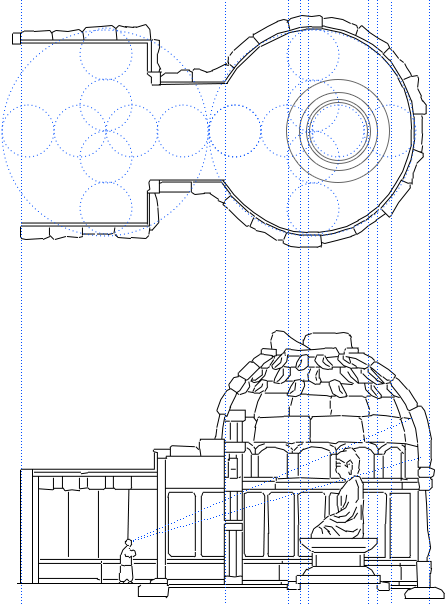Discover Korea's World Heritage
Seokguram Grotto and Bulguksa Temple
Bulguksa Temple Establishes the “Land of Buddha”
Bulguksa Temple, the embodiment of Buddhist doctrines, has four main halls: the Daeungjeon Hall (Hall of Great Enlightenment) enshrines Sakyamuni Buddha who represents the present world; the Geugnakjeon Hall (Hall of Supreme Bliss) for Amitabha Buddha who symbolizes paradise after death; the Birojeon Hall (Vairocana Buddha Hall) for Vairocana Buddha of the absolute truth; and the Gwaneumjeon Hall (Hall of Avalokitesvara Bodhisattva) for Avalokitesvara, the Bodhisattva who embodies compassion and healing.
- ① Daeungjeon Hall (Hall of Great Enlightenment)
- ② Geugnakjeon Hall (Hall of Supreme Bliss)
- ③ Birojeon Hall (Vairocana Buddha Hall)
- ④ Gwaneumjeon Hall (Hall of Avalokitesvara Bodhisattva)
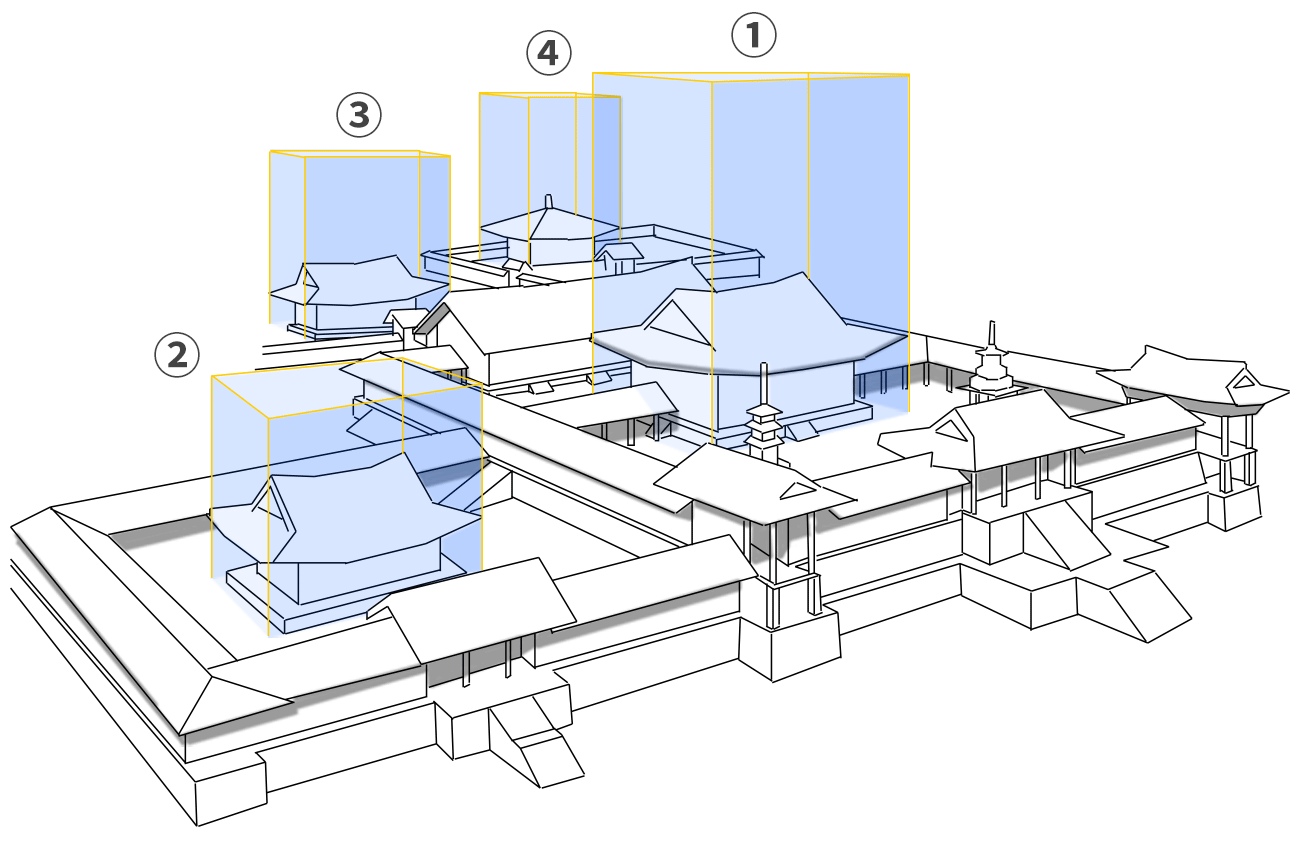
Road to the Land of Buddha
Bulguksa Temple is divided into two areas, marked by bridges. Cheongungyo Bridge (Blue Cloud Bridge) and Baekungyo Bridge (White Cloud Bridge) lead to the Daeungjeon Hall, while Yeonhwagyo Bridge (Lotus Flower Bridge) and Chilbogyo Bridge (Seven Treasures Bridge) are connected with the Geugnakjeon Hall. The area atop the bridges is Buddha’s world, while the area below the bridges is the human world. Cheongungyo Bridge and Baekungyo Bridge consist of 33 stairs. The number 33 stands for the road to enlightenment and symbolizes hope that even ordinary people will be able to reach the Land of Buddha as long as they make efforts.
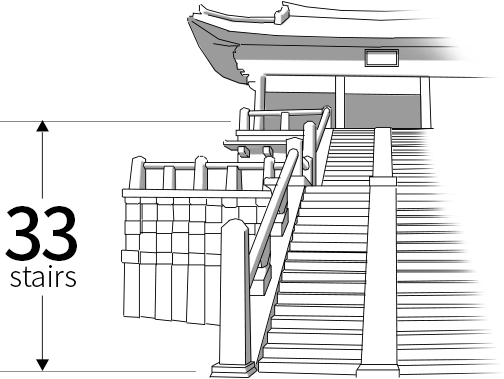
Hwaeom Bulguksa Temple
The three Buddhas and the Bodhisattva at Bulguksa Temple are separately enshrined in different halls, but they can be viewed as one in a broad context. They represent Hwaeom (Avatamsaka) philosophy that recognizes differences and stresses integration. Representing the yearning of the people of Silla to heal the scars of war and achieve national unity, the temple was named “Hwaeom Bulguksa Temple.”
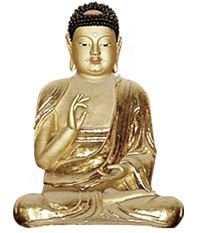
Sakyamuni Buddha
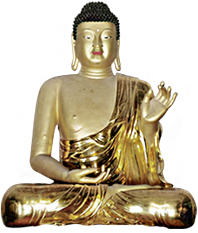
Amitabha Buddha
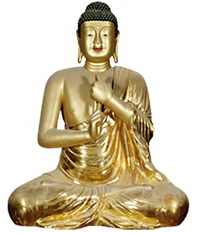
Vairocana Buddha
Dabotap Pagoda and Seokgatap Pagoda
Seokgatap Pagoda (Pagoda of Sakyamuni) reflects Sakyamuni Buddha’s teaching of the Lotus Sutra, while Dabotap Pagoda (Pagoda of Bountiful Treasures) portrays a part of the Buddhist scriptures, which states that Dabo Buddha, the Buddha from the past, attests the validity of Sakyamuni Buddha’s teachings. Seokgatap Pagoda is a simple structure, but it displays perfect symmetry and balance. The highly decorative Dabotap Pagoda, adorned with chilbo or Korean enamel, demonstrates the brilliant skills of Silla masonry. ''Mugujeonggwang Daedaranigyeong (Pure Light Dharani Sutra),” which was discovered in the Seokgatap Pagoda’s second story, is considered the world’s oldest woodblock print.
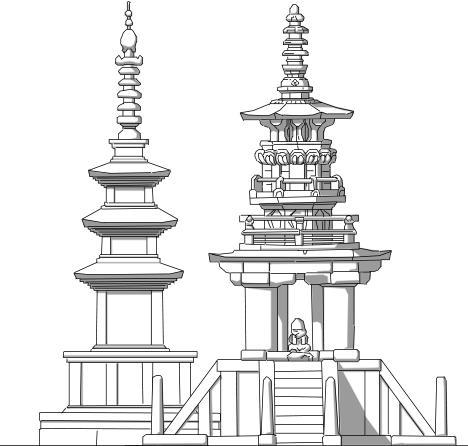
< Seokgatap Pagoda / Dabotap Pagoda >
Seokguram Grotto, the Crystallization of Silla’s Resplendent Culture and Religious Passion
The people of Silla built a rock cave temple on Mount Toham, 565 meters above sea level in an area with a clear view of the sunrise, to express the moment of Buddha’s enlightenment that is full of brightness in the absence of darkness. It was named Seokbulsa Temple (Stone Buddha Temple). Unlike other stone cave temples that were usually made by digging out natural rocks, Seokguram Grotto is a man-made cave that was assembled from pieces of granite. The 360 heavy stone blocks were assembled to create a perfectly domed ceiling, with a 20-ton cover stone on top of it. The marvelous structure is dubbed the miracle of granite.
Source: Cultural Heritage Administration
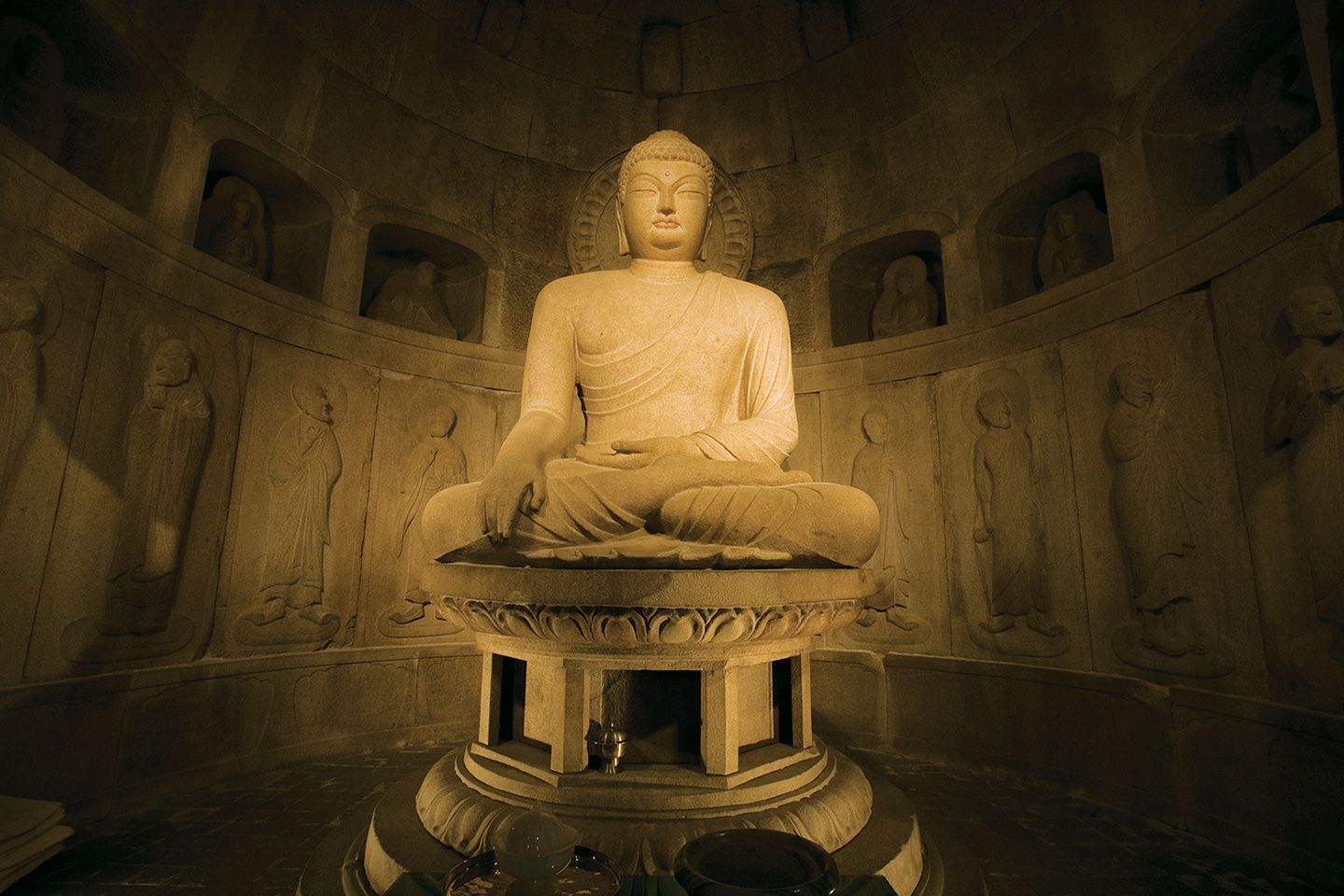
Remarkable Aesthetic Beauty
Seokguram Grotto consists of three sections: the Jusil main rotunda chamber that enshrines a 3.5-meter-high statue of Buddha, the square-shaped Jeonsil antechamber where Buddhist services were held, and the corridor. The structure shows Silla people’s belief that the heavens were round and the land was square. Engraved on the walls are 39 images of Bodhisattvas and disciples spreading Buddhism as well as other deities, such as Geumgangyeoksa and Sacheonwang, who protect the Buddhist laws.
Ancient Science Secrets that have Preserved Seokguram Grotto
Seokguram Grotto has been kept intact for over 1,200 years thanks to its design that facilitates natural ventilation and humidity control. Silla craftsmen let cold spring water flow beneath the structure so moisture that was formed inside would settle down towards the floor. The scientific design has protected the valuable stone sanctuary from weathering.
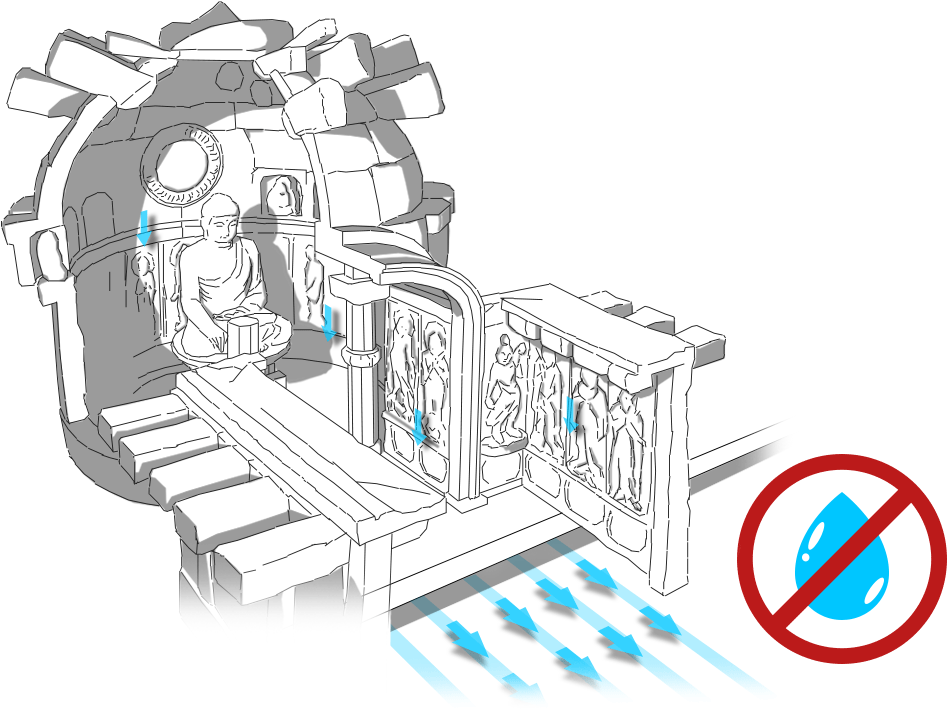
Exquisite Spatial Beauty and Symmetry
Seokguram Grotto was built in accordance with perfect mathematical calculations and design. It was designed on the basis of 12 dangcheok (1 dangcheok is 29.7 centimeters). In the Jusil main rotunda chamber with a radius of 12 dangcheok, worshippers stand at a spot that is double the distance of 12 dangcheok from the statue of Buddha. This is the ideal distance for the worshippers to view the statue. The statue of Buddha also exhibits the ideal beauty through precisely measured proportions, with the widths of its face, chest, shoulders and knees measured at a ratio of 1:2:3:4.
